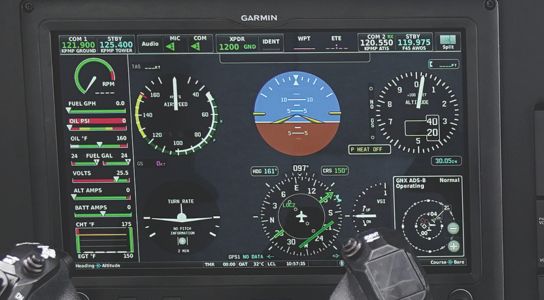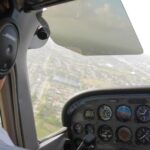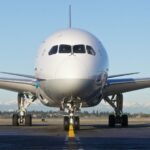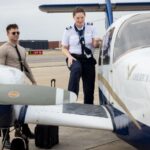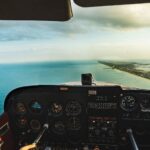There are three things in aviation that do a pilot no good: altitude above you, runway behind you, and fuel you don’t have. How then do we ensure that we do have enough fuel and use it safely, effectively, and efficiently?
For a safe flight, you must have sufficient fuel from a legal perspective. Per 14 CFR 91.151, for flights conducted under visual flight rules, you need enough fuel to fly to your destination and then for an additional 30 minutes at normal cruising speed during daylight hours, or 45 minutes during nighttime hours. Per 14 CFR 91.167, for flights conducted under instrument flight rules, you need enough fuel to reach your destination and then for an additional 45 minutes at normal cruising speed. If an alternate airport is required, you must have enough fuel to reach your destination, proceed to your alternate, and then have an additional 45 minutes of fuel. To estimate fuel consumption for 30 or 45 minutes, refer to your aircraft’s performance charts, using your gallons per hour figure and calculating half or three-quarters of that number.
So how does this translate to a safety-oriented perspective?
Firstly, it’s a misconception that you can simply take full fuel on every flight. Although many general aviation airplanes can handle maximum fuel in various scenarios, this is not always possible. You must carefully perform a weight and balance calculation of your aircraft’s center of gravity before each flight. Fuel plays a vital role in this calculation. A good rule of thumb to see exactly how much fuel you can carry on board is to take your aircraft’s zero fuel weight and subtract that number from your maximum takeoff weight. If the number you derive from your calculation is greater than the maximum weight of fuel you can fit in your tanks, you can take full fuel. If the number you derive from your calculation is less than the maximum weight of fuel you can fit in your tanks, then that is the exact poundage of fuel you can place in your tanks and not exceed the aircraft’s maximum takeoff weight. You would then divide that number by six, as AvGas weighs six pounds per gallon, to obtain the gallon amount of said fuel and ensure that your aircraft’s fuel tanks are not filled beyond that amount.
Secondly, now that you have adequate fuel, you must ensure it is used effectively. It is important to consider what altitude you will cruise at to obtain maximum endurance or range. Endurance is the time an airplane can stay airborne, while range is the distance it can travel. Comparing your numbers at varying altitudes for each of these charts is valuable, but remember—most of these charts assume zero-wind conditions. This is rarely the case in reality. Weather conditions, especially winds aloft, will influence your altitude choice. It is tempting to simply look for the altitude that will allow you to maximize tailwinds and minimize headwinds; however, you must weigh your options more carefully. Do you climb to a higher altitude, utilizing more fuel during said climb, or do you remain at a lower altitude, using less fuel but potentially facing less favorable wind conditions? Recall also that to achieve maximum range, you must reduce engine power as your airplane becomes lighter, and to achieve maximum endurance, you must adjust power and lean the fuel/air mixture to obtain the proper power setting with minimal fuel consumption.
This leads us to our final point—efficiency. During taxi and takeoff, ensure the fuel/air mixture is set correctly for the atmospheric conditions surrounding your airplane. Higher-density altitude conditions—such as higher elevation, warmer temperatures, and high humidity—require leaning the fuel/air mixture for maximum power. En route to your cruising altitude, and upon reaching it, follow the procedures outlined in the pilot’s operating handbook for your airplane. Operating with a mixture that is too rich will leave unburned fuel in the engine’s cylinders, while a mixture that is too lean can increase cylinder temperatures and cause engine damage. As you descend from your cruising altitude, ensure that you re-enrichen the fuel/air mixture to adjust for the increased air density.
Together, these techniques will enable you to ensure that you have enough fuel on board and that you use it safely and effectively for each flight.




